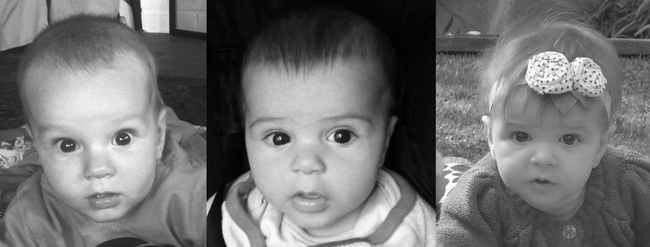Startup Idea: 3 Compelling Photo Experiences
I’m giving away my startup ideas because I’m focused on building my new startup, YesGraph. We help your app grow virally, so if you like this post go try out YesGraph!
Photo sharing is incredibly popular, and there are a huge number of photo applications. It is surprising there there is still room for innovation here. Considering the recent history of both Instagram and Snapchat, it is incorrect to treat the market as finished. There is a lot left to do, and when people build something valuable, it very quickly becomes very valuable.
There are a lot of details to get right when building a service, but I’m not going to delve into the nitty gritty of product and distribution. Instead, I just want to explore three different experiences I’m missing.
Align Age
I have three kids. I was once a kid. So were my parents and grandparents. I find the idea of aligning the age of people in photos fascinating. Forget the usual timeline of history, despite its prominence on Facebook and essentially every other photo site. I want to see all my kids when they were 6 months old right next to one another. The data needed to get this done is trivial: birthdays.
This idea might be taking a kernel of what we’re seeing now and expanding upon it in just the right way. What is the biggest photo experiences I have among friends? Baby photos. It’s common to see the hundreds of likes and comments when people have new born babies. There is something incredibly compelling here.
Timehop is doing some interesting things here in showing me what happened on a day in history. The problem is that birthdays aren’t aligned, so the picture of one kid from a few years back doesn’t match in age to his present day brother.
Making something even more compelling for parents and family sounds like a safe bet for a photo service.
The photos here are my kids aligned at newborn and 6 months old.
Sharing Everything With My Wife
My wife and I share all our photos, but it is a pain. All my photos live in Dropbox, but sharing ones she wants is manual. Their photos features are really advanced, but aren’t intended to be used along with a shared folder.
I’m looking for a dramatic increase in permissibility to make sharing much, much easier. I want my wife to be able to find all my photos at any time. I’d be delighted if the photos we each took were interleaved in my camera roll on mobile and together on desktop. This model is like “Find My Friends”. Trusted people can know my location any time without my needing to check in. Make that, but for photo sharing.
Again, this might be part of a larger pattern. I might be taking a peak into the future of sharing patterns by wanting to share so openly. Building something for couples might mean you’re in a good position to help everyone share more openly once preferences change.
All Photos Everywhere
The onboarding experience of many photo services is all about feeding data into the applications. This seems like a first generation cloud activity that is becoming commoditized. Currently, Facebook, Flickr, Eye-fi, Dropbox, Google+, and a half dozen startups all allow you to upload every photo you take to their service. The default is private, and sharing is just a matter of changing permissions. I actually love this model, but it misses what I really want.
I don’t want all my photos in Dropbox. I want all my photos everywhere. I want them on Facebook and Flickr both. I want them on my phone, locally stored so that I don’t need good connectivity to view them fast. I want them on my desktop all together.
I want a service that will aggregate every photo from every service and device I have, and disseminate to everything service and every device. It sounds familiar enough to think it must exist, but it doesn’t.
Like Dropbox, it comes with some challenges. In uploading a file to Facebook, the photo file gets modified, just the metadata if not the pixels. This means that uniquely identifying the photo becomes harder than comparing a file hash, but doing this is essential to allow every photo to go everywhere. This is probably just the tip of the iceberg of complexity.
Do you want to start working on this? Do you want to invest in this idea? Do you think this is all absurd? Get in touch: ivan.kirigin@gmail.com.
Subscribe to get more new ideas.

